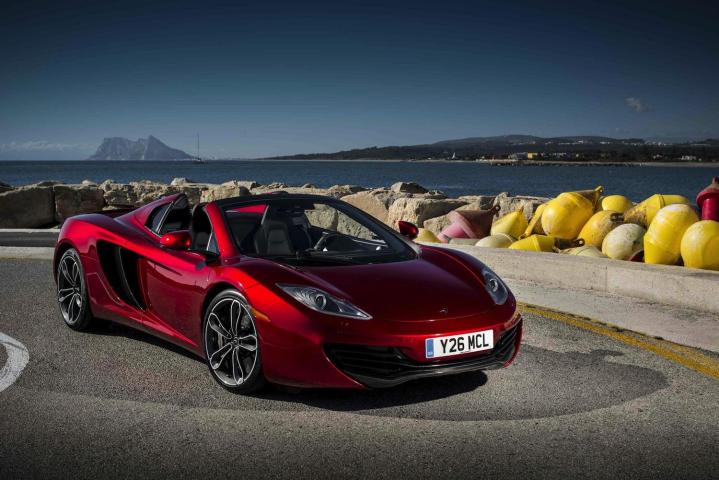
Forget Ford versus Chevy. The automotive rivalry of the decade is Ferrari versus McLaren.
The two companies had been competing on the Formula One circuit for years when McLaren decided to challenge Ferrari’s road car dominance with MP4-12C. Now, the team from Woking is taking things to the next level. Autocar reports that McLaren is planning a hardcore 12C variant to take on the Ferrari 458 Speciale.
The Speciale is a more intense version of the 458, with fewer luxuries and more performance that’s intended for buyers who think driving is more important than posturing. This has become something of a tradition for Ferrari’s “entry-level” mid-engined V8 super cars, so why shouldn’t McLaren do something similar with its own mid-engined V8 supercar? Still, McLaren’s changes could be a bit more significant.
While it will use the stock 12C’s carbon-fiber chassis, the new model will reportedly have unique bodywork meant to evoke the P1 hybrid hypercar. In addition to making the new car look more impressive, the styling changes should have aerodynamic benefits. It’s also rumored to have a modified version of McLaren’s 3.8-liter twin-turbocharged V8 that will produce around 650 horsepower, compared to 616 hp for the stock 12C.
A more extensive menu of changes makes sense, as McLaren already has the track-optimized 12C GT Sprint in the catalog. McLaren hasn’t confirmed this extreme 12C, but according to Autocar, it will be launched later this year. With the smaller P13 also expected to bow sometime in 2014, this is shaping up to be a very busy year for McLaren.


